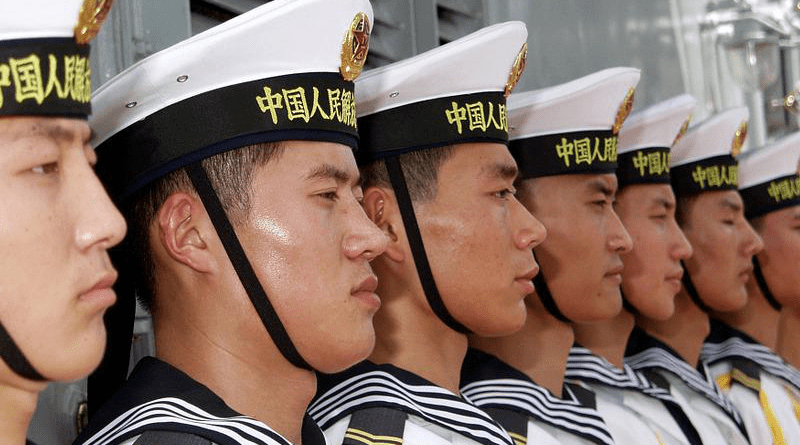A Reappraisal Of US Failure In Crisis Reliability In Indo-Pacific – OpEd
By Komal Khan
In March 2021, the lead of the United States Indo-Pacific Command, Philip Davidson alerted the Senate Armed Service Committee of the greatest danger facing the United States in the Indo-Pacific, and that is the erosion of the U.S. conventional deterrence capabilities vis-à-vis China. Two major determinants of this transformation that the U.S. identified are: First, China’s credible investment in building the Peoples’ Liberation Army; and, second, the adoption of the U.S. precedents of joint warfare that primarily shift the Indo-Pacific military balance unfavorable for the U.S. allied military network and its order in the region.
Moreover, a divulgence of the United States declination of any offensive action to China threat and a potential threat of China’s unilateral maneuver of the Indo-Pacific status-quo was made by the Indo-Pacific Command to the Biden Administration in a bid to reassure the Unite States monopoly over Indo-Pacific power and security dynamics amid ongoing U.S. – China strategic competition in the region.
An assessment of the strategic dynamics of the Indo-Pacific at this time signal another significant implication of this, at least, operational imbalance of conventional deterrence. That is, a strategic erosion of the United States’ strength is taking place; however, it is not only due to China’s increasing military hold over in region. Significantly, it is due to intensified indigenous medium power military networks being constructed in the Indo-Pacific security framework to implement an intra-regional integrated deterrence against the China threat. These medium power military networks foresee a security structure that is independent of the bilateral alliances with the U.S., thereby, opting for and consolidating a multipolar model of order in the Indo-Pacific.
Australia, in January 2022, entered into bilateral ‘Reciprocal Access Agreement’ (JA-RAA) with Japan that legalizes military stationing, training, reciprocal access to facilities and areas, technological cooperation and information exchange between them. The agreement also legalizes allied support that advances extended military deployments as implementation of regional extended network framework to extend their influence by military outreach to counterbalance China in the Indo-Pacific. However, the U.S. – Australia expanded alliance in the Indo-Pacific has persistent significance in terms of increased arms purchase and military trainings. More than three-quarters of the Australian arms imports is from the U.S. However, at the operational level in terms of actual deployment to share the burden of defense, Australia has been reluctant to be part of the U.S. Freedom of Navigation Operations (FONOPs) held near the artificial islands of China in the South China Sea. Moreover, it is also a fact that Australia does not station the U.S. troops beyond the Marine Rotational Force – Darwin.
Furthermore, realization of the disproportionate burdening of the security alliances with the U.S., the burden of bases and financial costs have been very crucial in reassessment of the collective security arrangements by the U.S as well as its allies. Therefore, as stated by Sheila A. Smith in her book ‘Japan Rearmed: The Politics of Military Power’, Japan’s military is more interested in deterring a conflict, rather than waging it. To implement this, Japan incorporated amendment in article 9 of the Japanese “MacArthur Constitution,” that previously limited full functioning of the Self Defense Forces (SDF), including the offensive military capabilities which are, at this time, workable deterrents particularly in conflict zones.
However, to seek sufficient counterattack military capabilities, as stated above, these medium powers have been collaborating bilaterally in regional minilaterals and at multilateral levels with inclusion of the U.S. to meet advanced technology needs. As in AUKUS, the security arrangement provides Australia with advanced nuclear submarines as counterattack capability. Similarly, the United States and Japan have been collaborating to deploy significant capabilities, including anti-ship missiles on Japanese Islands. Both the states have been in negotiations for the deployment of long-range missiles along the first island chain that stretches from the Japanese archipelago to the Philippines.
Similarly, India is also reluctant to compromise its strategic autonomy while at the same time benefitting from the U.S.-India strategic partnership of the ‘equals‘ that India has been utilizing as an opportunity for its advanced technology and weapons procurement. The dormant utility of QUAD in terms of military partnership is the reason why the U.S. and its European allies are dragging India into AUKUS – that is more like an alliance in Indo-Pacific. The only intervening reluctance is the unreliability of the United States securities when it comes to actual warfare.
The Ukraine War has also identified a possible failure of the U.S. security assurances wherein the U.S. might sit on the sidelines of the conflict. Moreover, the war also points out failure of the U.S. security reliability in crisis, thereby, indicating the erosion of the United States conventional deterrence capability vis-à-vis China and also Russia. This being the case, the concept of collective security is witnessing a transformation into a more regional multilateral medium power integrated deterrence networks in the Indo-Pacific, either with or without the United States as part of them.
The writer is a associated with the Strategic Vision Institute (SVI), a non-partisan think-tank based out of Islamabad, Pakistan.

